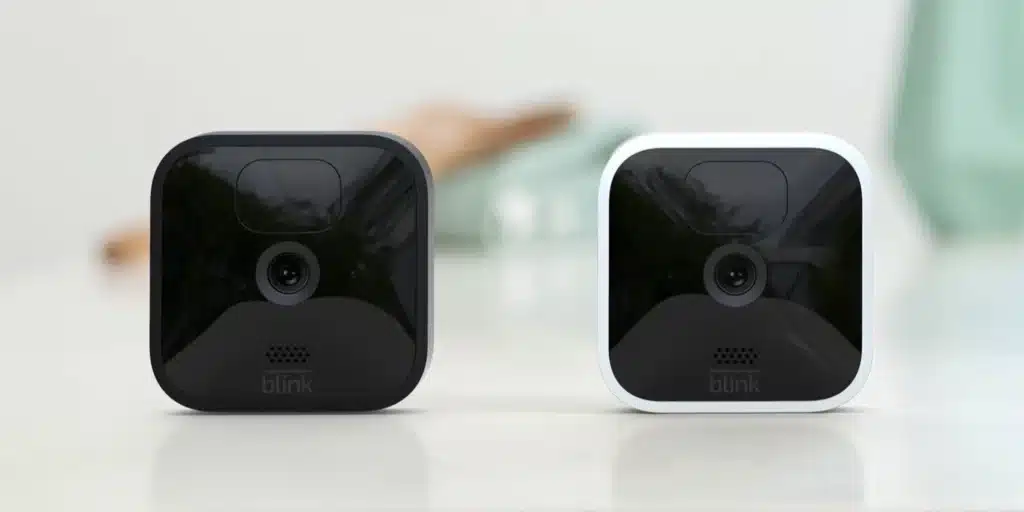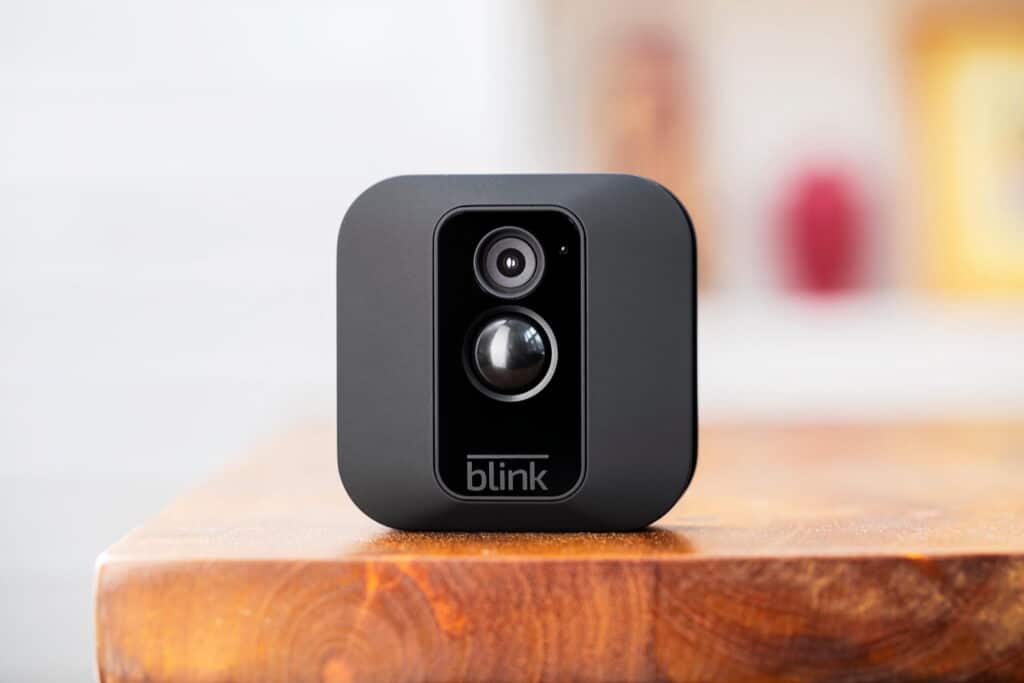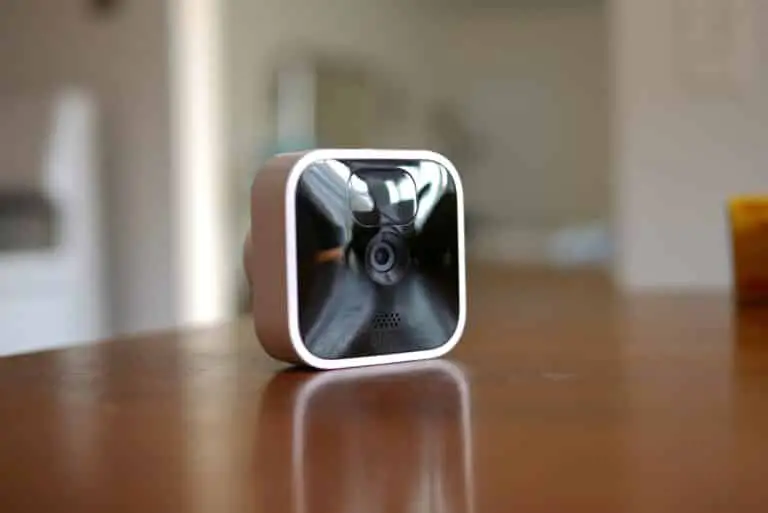Introduction
Why Is My Blink Camera Not Detecting Motion: Home security has elevated to the top of homeowners’ priorities in recent years, driving up demand for trustworthy surveillance systems. Blink cameras have been a popular option for many people looking to remotely monitor their houses because of their famed usability and wireless capabilities. These intelligent devices are made to recognize and record motion-triggered events, giving homeowners a sense of security and assurance.
However, in the age of technology, even the most advanced devices may encounter occasional issues, and one common problem faced by Blink camera owners is the failure of the camera to detect motion properly. This issue can be frustrating, as it compromises the camera’s primary function and undermines the security it aims to provide. The purpose of this investigation is to delve into the possible reasons behind why Blink cameras may fail to detect motion and explore potential solutions to rectify these shortcomings.
From hardware malfunctions to environmental factors and settings misconfigurations, various elements could contribute to the problem at hand. By figuring out the underlying causes, homeowners may take the necessary action to effectively restore the motion detection functioning of their camera, whether they do it themselves or hire a pro. By bringing this subject to light, we hope to arm Blink camera owners with the information they need to maximize their security system and make their homes more secure.

How do I get my Blink camera to detect motion?
You can also enable or disable Motion Detection within Device Settings. Go to Device Settings and then tap Motion Settings. The first setting is Motion Detection. The Motion Detection setting allows you to change your camera’s motion detection without having to Arm your system.
To ensure that your Blink camera detects motion accurately and reliably, follow these essential steps:
Proper Camera Placement
Position your Blink camera at a suitable height and angle to cover the desired area effectively. Avoid pointing the camera directly at bright light sources or reflective surfaces, as they can interfere with motion detection.
Check Camera Sensitivity Settings
Adjust the motion sensitivity settings of your Blink camera to the appropriate level. Too high sensitivity may trigger false alarms, while too low sensitivity might result in missed motion events.
Define Motion Zones
Utilise the camera’s motion zone feature to specify the areas where you want motion to be detected. This can help reduce false alarms caused by movements in irrelevant zones.
Firmware Updates
Regularly check for and install firmware updates for your Blink camera. These updates often include improvements to motion detection algorithms and overall performance.
Clear Camera View
Ensure that the camera lens is clean and free from any obstructions, such as spider webs or debris, which can hinder motion detection.
Network Connectivity
Ensure that your camera has a stable Wi-Fi connection. A weak or intermittent network signal can lead to delayed or missed motion notifications.
Power Management
If you are using battery-powered Blink cameras, monitor the battery levels regularly and replace or recharge them as needed. Low battery levels can impact motion detection performance.
Are Blink cameras only motion detected?
In conclusion, Blink cameras are not always recording. They use motion detection to trigger recording, and stop when the motion stops or the maximum recording time is reached. However, users can manually start a live video stream from the camera at any time using the “Live View” feature.
Blink cameras are primarily known for their motion detection capabilities, but they offer more than just motion detection. While motion detection is one of their key features, these smart cameras come equipped with a range of functionalities to enhance home security and user experience.
Motion Detection
Blink cameras have sophisticated motion sensors that can pick up on any motion inside their viewing area. When the camera detects motion, it records a short video clip or takes a picture, and then notifies the linked device, which may be a smartphone or tablet.
Live View
Users can access the live feed from their Blink cameras at any time through the Blink app. This allows them to monitor their property in real-time, providing an extra layer of security and peace of mind.
Cloud Storage
Blink cameras offer cloud storage for recorded videos and clips. Users can subscribe to a cloud storage plan to store footage securely, enabling them to review past events and keep a record of activities around their property.
Two-Way Audio
Many Blink camera models feature two-way audio, enabling users to communicate with people near the camera. This feature can be used for various purposes, such as greeting visitors, scaring away potential intruders, or speaking to family members at home.
Battery-Powered
Most Blink cameras are battery-powered, making them easy to install and relocate without the need for wiring or power outlets.
How far can Blink detect motion?
Approximately 20 feet
What’s the maximum distance Blink cameras sense motion detection? The maximum motion detection range is approximately 20 feet for all blink cameras. Some factors that influence motion detection are the app sensitivity setting, camera placement, object size, infrared illumination and object temperature.
The detection range of Blink cameras can vary based on several factors, including the camera model, sensitivity settings, and environmental conditions. Blink cameras often detect motion within 20–30 feet (6–9 meters).
The detection range is influenced by the camera’s field of view, which may differ depending on the camera’s placement and angle. Cameras with a wider field of view can cover a larger area and potentially detect motion from a greater distance.
Additionally, the motion sensitivity settings can affect the camera’s ability to detect motion at different distances. Higher sensitivity levels increase the likelihood of capturing motion events even at greater distances, but they may also result in more false alarms triggered by small movements, such as tree branches swaying or passing insects.
Environmental conditions can also impact motion detection range. Adverse weather conditions like heavy rain, fog, or snow might reduce the camera’s effectiveness in detecting motion accurately. For optimal motion detection performance, it is essential to position the camera strategically, adjust sensitivity settings appropriately, and consider any potential obstructions in the camera’s field of view.
Can you setup Blink to detect human motions?
in the top right corner thumbnail image for your camera on the home screen. Tap Motion Settings on the Device Settings screen and select Motion Recording Types. Then select Person Detection to only detect and record people in your video.
Link cameras do not have a specific built-in feature that directly detects humans as distinct from other types of motion. Blink cameras employ sensors to detect motion in their range of vision, whether it’s human, animal, or inanimate.
However, while Blink cameras do not have a dedicated “human detection” feature, there are ways to optimise their motion detection to focus on human activity:
Motion Zones
Utilise the motion zone feature to specify areas where you are most interested in detecting motion. By setting up zones strategically, you can focus on key areas where human activity is expected, such as entrances or pathways.
Sensitivity Settings
Adjust the sensitivity level of the camera to reduce false alarms triggered by smaller movements, such as tree branches or pets. Finding the right balance in sensitivity can improve the camera’s ability to detect significant human movements.
Camera Placement
Position the camera at a suitable height and angle to capture human-sized movements effectively. Mounting the camera at eye level or slightly above can increase its chances of detecting human activity accurately.
Regular Testing
Conduct periodic tests by walking through the monitored area to ensure that the camera is capturing human motions as desired.
While Blink cameras do not offer explicit human detection, leveraging the available settings and features can help enhance their ability to capture human activity and contribute to improved home security and monitoring.
Is Blink camera motion activated?
Once your system is Armed, any motion detected by your cameras will send a notification to your mobile device. Depending if you are either subscribed to a Blink Plan or using Local Storage, a motion clip is recorded to the Clips section of the app.
Motion-activated blink cameras. Blink cameras automatically capture video or images when motion is detected. The camera’s motion-activated capability alerts it to burglars, guests, and other activity in the monitored area, improving home security.
When the Blink camera’s motion sensors detect activity, the camera will promptly send a notification to the connected mobile device, such as a smartphone or tablet, alerting the user about the detected motion. Users can then access the live view or the recorded clips through the Blink app to monitor the event in real-time or review it later.
Motion-activated Blink cameras save battery life by only recording when needed and alert homeowners to any activity near their property. This makes Blink cameras a reliable and user-friendly solution for home surveillance, allowing homeowners to stay vigilant and maintain a sense of security even when they are away from home.
How do I turn on Blink motion alert?
Here’s how to check and enable Blink Notifications on your device:
- Open the Settings app on your device.
- Search for Notifications (Notification Center on Android devices).
- Scroll and locate the Blink app.
- Toggle ON Allow/Show Notifications.
To turn on Blink motion alerts and receive notifications about detected motion, follow these steps:
Install Blink App
Make sure you have the Blink app installed on your smartphone or tablet. The app is available for both Android and iOS devices and can be downloaded from their respective app stores.
Set Up Your Blink Camera
Ensure that your Blink camera is properly set up and connected to your Wi-Fi network. Follow the instructions provided in the Blink app to complete the setup process.
Open the Blink App
Launch the Blink app on your mobile device and log in using your Blink account credentials. If you don’t have an account, create one using the app.
Access Camera Settings
Once logged in, select the Blink camera you want to enable motion alerts for from the list of connected devices. Tap on the camera to access its settings.
Enable Motion Detection
In the camera settings, look for the option related to motion detection or motion alerts. It may be called “Motion Detection,” “Motion Alerts,” etc.
Turn on Motion Alerts
Toggle the switch or button to turn on motion alerts for the selected camera. You may also have options to adjust the sensitivity levels or set up motion detection zones, depending on the model of your Blink camera.
Configure Notification Settings
Make sure your mobile device’s notification settings allow the Blink app to send you alerts. Check the app’s notification settings or your device’s settings to ensure notifications are enabled.

Why is my Blink camera’s battery life important for motion detection?
A low battery can impact the camera’s performance, including motion detection. Regularly check and recharge or replace the batteries to maintain optimal functionality.
The battery life of a Blink camera is crucial for motion detection because it directly impacts the camera’s ability to function as a reliable and effective surveillance device. Blink cameras capture motion-activated images and videos. However, this constant monitoring and capturing of motion events can consume significant amounts of power.
A longer battery life ensures that the Blink camera remains operational for extended periods without needing frequent battery changes or recharges. This is especially for users who have placed their cameras in remote or hard-to-reach locations, where regular maintenance can be challenging.
When the battery life is sufficient, the camera can continuously and actively monitor the monitored area, providing real-time motion alerts and capturing critical footage without interruption. A depleted battery, on the other hand, can result in the camera being offline or unable to record motion events, leaving the home vulnerable to potential security breaches.
How do I check my Blink camera’s battery level?
Open the Blink app and navigate to the camera’s settings. There, you should find information about the camera’s battery level. Alternatively, some Blink cameras may have a battery level indicator near the camera’s lens.
To check your Blink camera’s battery level, follow these steps:
Open the Blink App
Launch the Blink app on your smartphone or tablet. Check your Blink login.
Access Camera Settings
Once you are in the Blink app, tap on the camera you want to check the battery level for. This will take you to the camera’s settings page.
Check Battery Status
Look for the battery icon or battery level indicator within the camera’s settings page. The battery icon typically displays the current battery status of the camera.
Battery Percentage
Some Blink apps indicate the camera’s battery state as a percentage.
Battery Icon Color
In certain Blink app versions, the battery icon may change color to indicate the battery status. For example, green may indicate a high charge, yellow or orange for moderate charge, and red for a low battery.
Refresh Battery Status
If the battery level does not update automatically, you can try pulling down on the settings page to refresh the camera’s status and check the updated battery level.
Regularly checking the battery level of your Blink camera is essential to ensure that it remains operational and continues to provide reliable motion detection and security for your home. If you notice a low battery level, make sure to recharge or replace the batteries promptly to maintain uninterrupted functionality.
Conclusion
The investigation into the causes behind Blink camera‘s failure to detect motion has shed light on various potential factors that could impede its functionality. Homeowners experiencing this issue should find solace in the fact that solutions exist to address these problems effectively. Hardware issues are a leading cause of motion detection failure. Regular maintenance, firmware updates, and checking for physical obstructions are essential steps in ensuring the camera operates optimally.
Considering environmental factors, such as extreme weather conditions or direct sunlight, can significantly impact motion detection reliability. Misconfigurations in camera settings can also lead to motion detection problems. Verifying sensitivity levels, motion zones, and scheduling settings can help users pinpoint and rectify any configuration errors. Moreover, the presence of pets or wildlife within the camera’s field of view can trigger false alarms or deter the camera from detecting actual intrusions. Strategically positioning the camera and utilizing activity zones can mitigate these challenges.
Overall, the resolution of motion detection issues with a Blink camera lies in a methodical approach to diagnosing the problem and implementing the appropriate solutions. With due diligence and persistence, homeowners can optimise their Blink camera’s capabilities and reinforce their home security effectively.To maintain the utmost security, periodic checks and proactive measures are crucial, ensuring that the Blink camera remains a reliable guardian in safeguarding homes and providing residents with the peace of mind they deserve. By staying vigilant and informed, homeowners can enjoy the full benefits of their Blink camera, harnessing its potential to enhance the safety of their living spaces for years to come.

